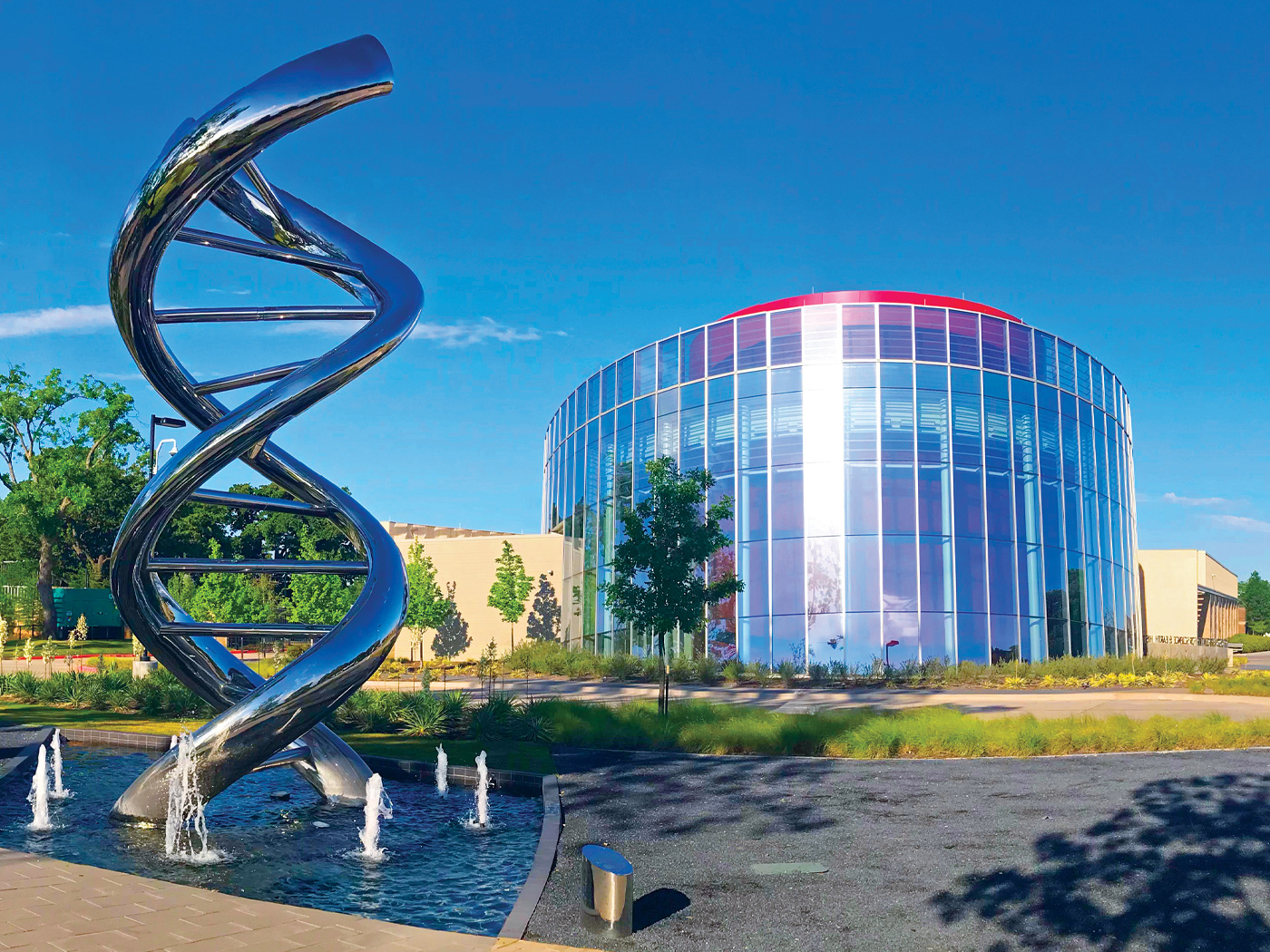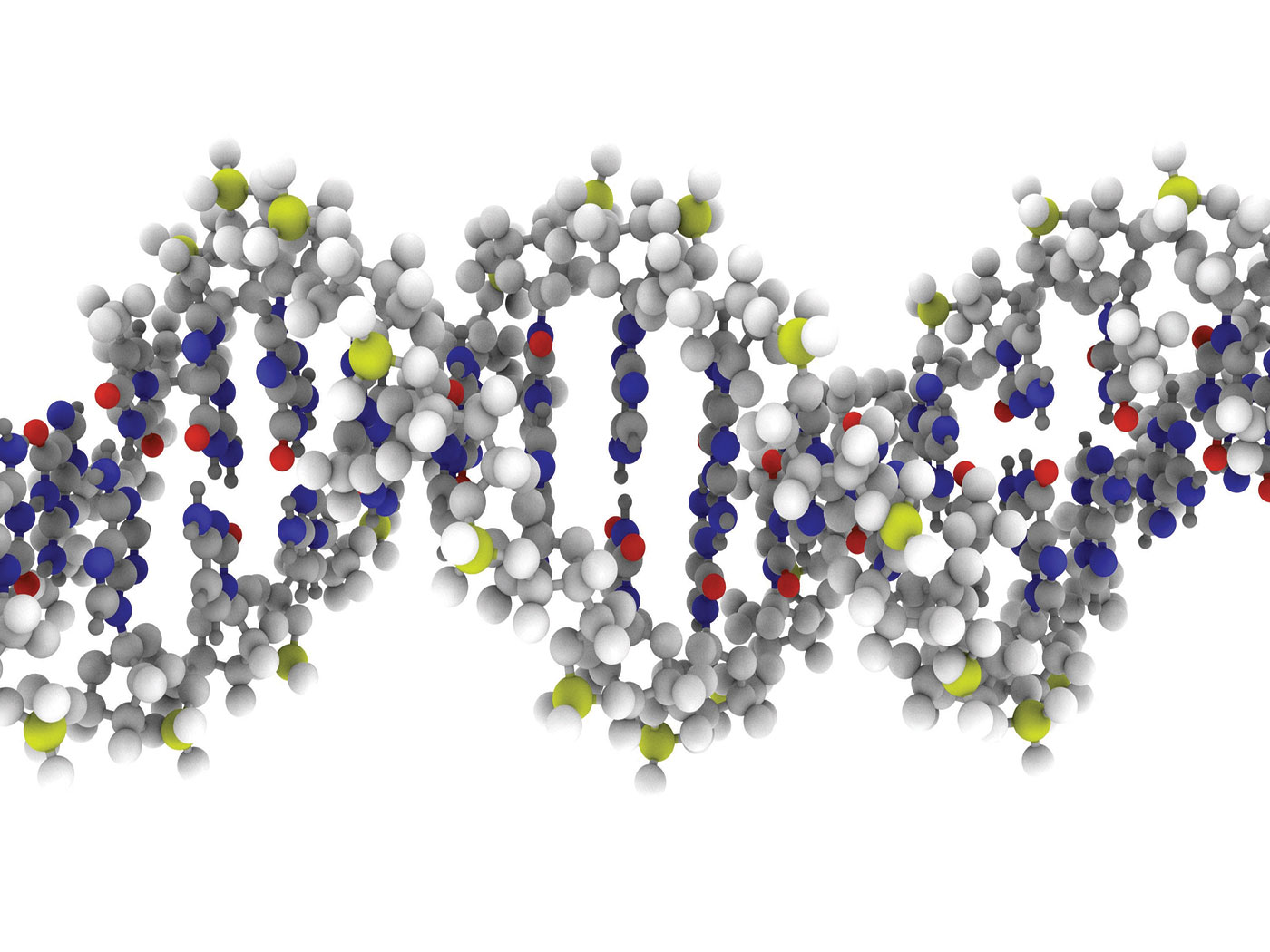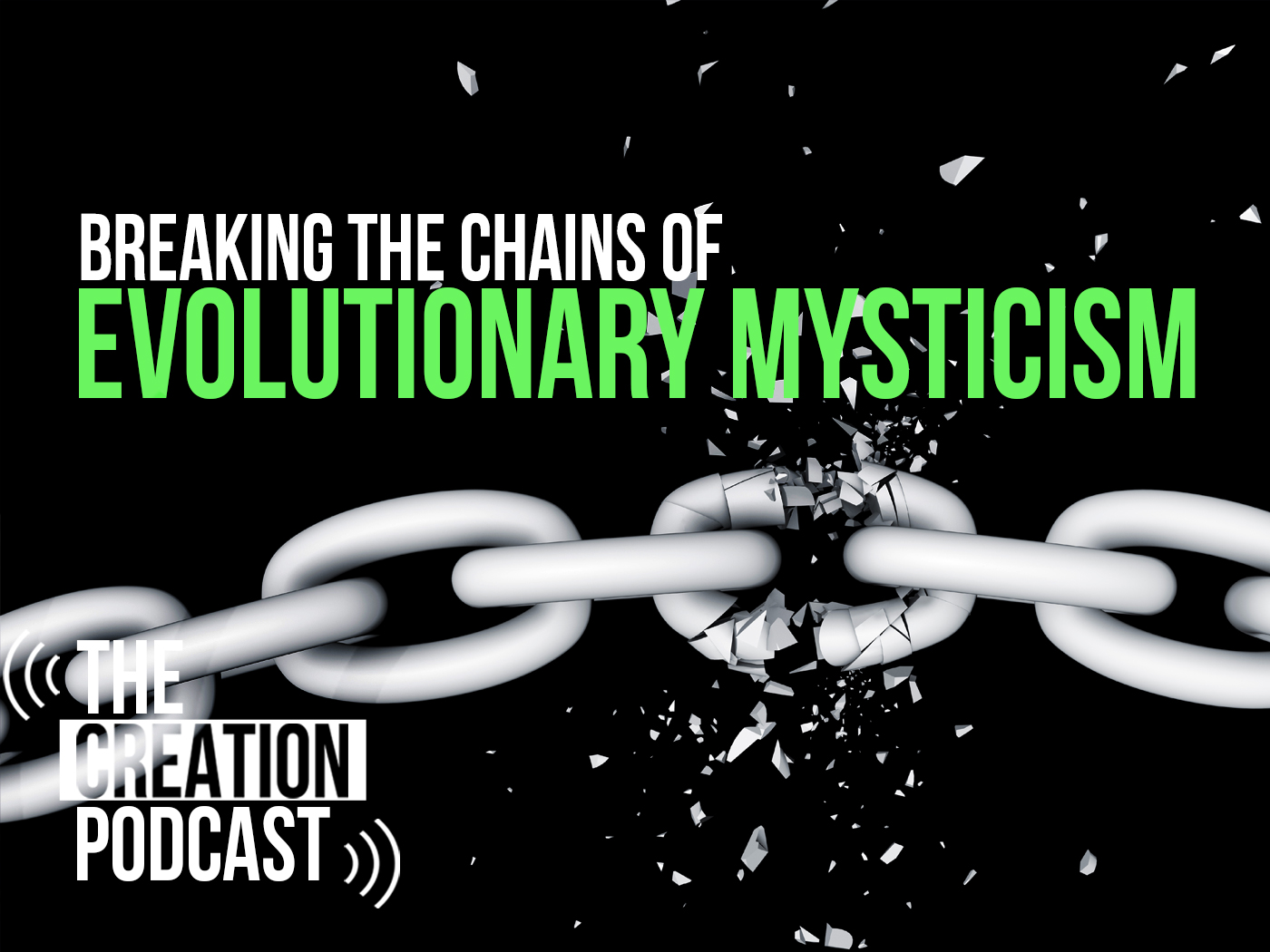The Bible is quite clear about the origin and timeframe for the creation of Earth and the cosmos. If Scripture is inaccurate in this, then how can it be trusted in anything else? Some evolutionists throw out theistic evolution (God using evolution as His creative process) as a philosophical panacea, with the goal of leading people to conclude that Genesis is a myth. Like Nimrod of ancient times, they know they must provide an alternative (i.e., naturalism, specifically scientism—the belief that science alone can render truth about our world and reality) to biblical truth if they are to hold sway over the public in what is essentially a couched rebellion against God.
One of the indirect evidences that evolutionists universally appeal to is radioactive dating because it appears to supply the deep time their evolutionary models demand. But how accurate is their model, and how scientific is their approach?
![]() In this article we’ll look at isochron dating. An isochron is a line on an isotope ratio diagram denoting rock samples. The slope of the line is related to the age of the samples.
In this article we’ll look at isochron dating. An isochron is a line on an isotope ratio diagram denoting rock samples. The slope of the line is related to the age of the samples.
The simplest way to think of it is this: Some rock materials (isotopes) decay, and we can determine the age of a rock in today’s laboratories by determining how much of a specific isotope contained in the rock has decayed. Both the decaying isotope and the isotope it produces (its daughter) can be compared to an isotope of the daughter’s elemental family that does not decay. These two ratios, when plotted on a graph for many different samples from a rock suite, should hypothetically produce a straight line under certain assumed conditions. The Y intercept of that line will then provide the initial ratio of the daughter isotopes at the time the rock suite formed, and the slope (m) will provide the age of the rock suite.
![]() Note: The equations may be daunting, especially to the layman, so we’ve placed them in sidebars. Hang in there—read the narrative and we’ll get to the answer we’re looking for.
Note: The equations may be daunting, especially to the layman, so we’ve placed them in sidebars. Hang in there—read the narrative and we’ll get to the answer we’re looking for.
To find out how much material began the decay process long ago, we need to determine N0, the number of parent atoms present when the rock was formed. But this presents a problem for any given material since no one can go back in time and measure that number. Decay constants for radioisotopes typically used in deep-time dating range from 0.0654 × 10-10 yr-1 for 147Sm to 9.85 × 10-10 yr-1 for 235U.
![]() So the equation in sidebar A guarantees deep time at today’s decay rates, unless N (the number of parent atoms now) and N0 are very close in magnitude. At this point the closed system assumption was introduced and secularists assumed that all, or most, of the daughter nuclei present in a given material were there as a direct result of the parent’s decay. One can then estimate N0 by setting it equal to the number of daughter nuclei plus the number of parent nuclei present at the current time, assuming no daughter nuclei were present at the beginning of the decay sequence. (See sidebar B.)
So the equation in sidebar A guarantees deep time at today’s decay rates, unless N (the number of parent atoms now) and N0 are very close in magnitude. At this point the closed system assumption was introduced and secularists assumed that all, or most, of the daughter nuclei present in a given material were there as a direct result of the parent’s decay. One can then estimate N0 by setting it equal to the number of daughter nuclei plus the number of parent nuclei present at the current time, assuming no daughter nuclei were present at the beginning of the decay sequence. (See sidebar B.)
Of course, one can never be sure that all the daughter nuclei came from the radioactive decay of the parent because the assumption of a closed system on or near Earth’s crust for millions of years stretches credibility. Thus, geochronologists need a more reliable method of dating materials than the straightforward accumulation radioactive decay clock.
The better dating method is called the isochron method of radioactive dating. This approach theoretically bypasses the issue of unknown initial conditions for isotope concentrations by combining a linear equation analysis with a nonlinear equation to simulate time evolution of isotopes in rock.
The key new concept introduced in this dating method is this: Researchers seek to develop a ratio of the parent and daughter nuclei to a stable non-radiogenic nucleus of the daughter’s elemental family.
In implementing this approach, scientists assumed that the initial ratio of daughter nuclei will remain the same throughout the rock matrix where there are no parent nuclei— i.e., from the time of solidification until the present time, all daughter nuclei are produced only by decay of the parent nuclei in the sample being analyzed.
This initial ratio can be quantified by graphing the ratio of the daughter nuclei versus the ratio of the parent nuclei to the non-radiogenic daughter nuclei for chemically different parts of a rock sample on an XY plot and extending the resulting straight line to the Y intercept where there are zero parent nuclei. This assumes there has been no migration of daughter or parent nuclei within the matrix since its solidification. It also assumes that the daughter isotopes had sufficient time to uniformly distribute themselves throughout the material matrix; i.e., crystallization cannot be too rapid. This second assumption is the homogeneity assumption. Forming an isotope ratio also has the practical advantage in that most instruments used to quantify isotopes are more accurate in determining ratios than absolute values. (See sidebar C.)
![]()
If the mathematics in this age equation are sound, why would any rational person question the model the equation represents? Models are essentially the modern equivalent of a hypothesis and are subject to the criteria for evaluating any scientific hypothesis. Do the isochron results or predictions match observation and experimental data? Do the assumptions that constitute essential elements of the model make rational sense? If the answer to either of these equations is no, then scientists must reject the model and generate a new one.
First, let’s take a hard look at the critical assumptions of the isochron model. The three basic assumptions are:
- The solid material matrix must remain a closed system from the time of formation to the present time;
- The initial amount of the daughter isotope is known; and
- The decay has occurred at a constant rate over time.
A fourth and more subtle assumption—homogeneity— assumes that the daughter isotopes distribute themselves evenly throughout the solid rock matrix as it solidifies but the parent nuclei do not.
First assumption issue: That a solid material matrix near the surface of the earth would remain a closed system over millions of years strains plausibility. Hydrothermal activity,1 ionic transport, partial melting, and nuclear reactions resulting from cosmic ray bombardment are all factors that could change elemental distributions in a rock formation over time.
Second assumption issue: The isochron model was created to solve the “known daughter isotope” assumption, but does it? In order for the initial amount of the daughter isotopes to be known, the isotopes have to be uniformly distributed throughout a rock formation when it solidifies, and it must solidify slowly enough for this uniformity to occur. If molten material passes through solid rock, partially liquefying it, then a mixing of two rock formations occurs. Currently, there is not a definitive way to tell the difference between a mixing line and an isochron line.2 Therefore, one must assume that the isochron line began with a slope of zero much like the earlier methods of assuming initial parent or daughter concentrations.
Third assumption issue: As pointed out in the first article of this series, recent experimental evidence throws the absolute constancy of the radioactive decay constant into serious question. Under conditions that possibly existed during the great Flood, it would not be unreasonable to hypothesize that the radioactive decay rates were accelerated enough to produce evidence of great age in Earth’s rock formations, especially those of igneous or metamorphic origins.3
![]() Homogeneity assumption issue: Finally, there is the intractable problem of the homogeneity assumption conflicting with the necessity that the isochron generate several independent equations in order to establish a linear relationship in both the present and past. If the daughter isotopes are uniformly distributed throughout the rock formation during cooling, then the parent isotope should also be uniformly distributed in the “whole rock” parts of the rock. The vast majority of isochrons reported in the literature are of the whole rock variety, yet only the individual mineral isochrons are internally consistent with this particular assumption. Fractionation4—i.e., separation of isotopes by purely physical processes during cooling—presents significant problems for the homogeneity assumption of isochron-model dating, particularly for the K-Ar, Rb-Sr, and the U-Pb based methods.
Homogeneity assumption issue: Finally, there is the intractable problem of the homogeneity assumption conflicting with the necessity that the isochron generate several independent equations in order to establish a linear relationship in both the present and past. If the daughter isotopes are uniformly distributed throughout the rock formation during cooling, then the parent isotope should also be uniformly distributed in the “whole rock” parts of the rock. The vast majority of isochrons reported in the literature are of the whole rock variety, yet only the individual mineral isochrons are internally consistent with this particular assumption. Fractionation4—i.e., separation of isotopes by purely physical processes during cooling—presents significant problems for the homogeneity assumption of isochron-model dating, particularly for the K-Ar, Rb-Sr, and the U-Pb based methods.
So how do the actual data compare with the model results? First, the various isotope combinations used in the isochron method of dating are clearly discordant—they do not produce the same age for a given rock formation.5 Second, the isochron method gives erroneous ages for rock formations of known age.6 Specifically, rocks gathered from recently erupted Mt. Ngauruhoe in New Zealand gave a K-Ar date of 270,000 to 3.5 million years, a Rb-Sr date of over 133 million years, a Sm-Nd date of nearly 200 million years, and Pb-Pb dates of 3.9 billion years—all this from rocks known to be less than 60 years old!
Another example involves lavas from the Virunga Toro-Ankole regions of the east African Rift Valleys.7 Lavas from these rift valleys known to be Pliocene (<∼ 5 million years) or younger give a Rb-Sr isochron model age of 773 million years. Igneous rocks on the rim of the Grand Canyon give dates older than the igneous rocks at the bottom, contrary to their stratigraphic placement.8 Clearly, the model does not reliably reproduce the observational data and therefore must be modified or used with appropriate caveats.
In the end, the isochron model for radioactive dating is only a hypothesis and a rather poor one at that. Models, no matter how elegant their mathematics, are only as good as the assumptions that go into them and how well they reproduce reality through observation and experimental data.
Conclusion: The scientific method simply does not allow isochron-model dating to be presented as scientific fact. Back to the drawing board.
Click here to read “Clocks in Rocks? Radioactive Dating, Part 1.”
Click here to read “The Noble Clock: Radioactive Dating, Part 3.”
References
- Komarneni, S. and W. B. White. 1983. Hydrothermal Reactions of Strontium and Transuranic Simulator Elements with Clay Minerals, Zeolites, and Shales. Clays and Clay Minerals. 31 (2): 113-121.
- Faure, G. 1986. Principles of Isotope Geology, 2nd ed. New York: John Wiley & Sons, 147.
- Snelling, A. 2005. Radiohalos in Granites: Evidence for Accelerated Nuclear Decay. In Radioisotopes and the Age of the Earth: Results of a Young-Earth Creationist Research Initiative. Vardiman, L., A. Snelling, and E. Chaffin, eds. El Cajon, CA: Institute for Creation Research, 101-151.
- Faure, Principles of Isotope Geology, 7.
- Snelling, Isochron Discordances and the Role of Inheritance and Mixing of Radioisotopes in the Mantle and Crust, Radioisotopes and the Age of the Earth, 393-509.
- Morris, J. 2007. The Young Earth. Green Forest, AR: Master Books, 52.
- Faure, Principles of Isotope Geology, 146-147.
- Morris, J. 2007. The Young Earth, 58-59.
* Dr. Cupps is Research Associate at the Institute for Creation Research and received his Ph.D. in nuclear physics from Indiana University-Bloomington.






.jpg)









